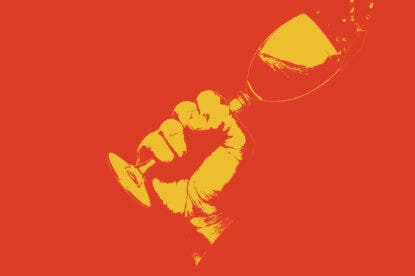Depending on where it’s grown and how it’s made, Chardonnay can be lean and flinty, or rich and buttery. In the last 20 years, however, Chardonnays made in the latter style have lost favor with many drinkers.
“You have no idea how much I get criticized for being the only person at the restaurant table who drinks buttery Chardonnays, and considered an outcast,” a wine lover named Greg wrote to The Wall Street Journal in 2006. He may have been dining with the ABC (Anything But Chardonnay) crowd, or people who consider full-bodied Chardonnays “butter bombs” that mask any sense of place.
Everyone is entitled to their opinions, of course, but Chardonnay sparks multitudes of them.
“As a sommelier, I would always discourage guests from swearing off a whole varietal, and instead encourage them to explore producers and regions,” says Dan O’Brien, founder/winemaker of Gail Wines. He worked in restaurants for 10 years before becoming a winemaker, and believes that Chardonnay is often misunderstood.
Some of the world’s most highly regarded Chardonnays from Burgundy and beyond are made with malolactic fermentation. The process creates a creamier consistency and a buttery note in wines.
How did we get to this point? And is there any hope for a big, buttery redemption?
A Rich History
Malolactic fermentation, also known as “MLF” or “malo,” is a process where winemakers use bacteria to lower a wine’s acidity. During the months-long process, bacteria changes malic acid to softer, creamier lactic acid. Diacetyl, a byproduct of MLF, imparts a buttery taste.
To make a dry, crisp Chardonnay, winemakers use MLF sparingly or stop it altogether. They embrace MLF if they want to create a richer, rounder wine. The process changes the overall mouthfeel of the wine, producing a soft, creamy texture on the palate and notes of butter, sour cream and yogurt.
“As a sommelier, I would always discourage guests from swearing off a whole varietal.”—Dan O’Brien, founder/winemaker, Gail Wines
Winemakers have understood the effects of MLF since the 19th century, but the practice became especially popular among U.S. winemakers near the start of the 21st century. Why? Because they wanted to sell wine.
“The late 1990s specifically marked a style shift in wine for American consumers as they began to purchase wines based on critics’ scores,” says O’Brien. At the time, critics like Robert Parker tended to favor wines that were bigger, richer and higher in alcohol. Consumer tastes developed in tandem, so winemakers gravitated to more oaky styles.
“Thanks to high sugars at harvest, lots of new oak and [MLF], they were able to achieve this quality, which became the norm,” says O’Brien.
Pendulum Swing
Consumer tastes are cyclical. And those big, oaky, buttery wines became less fashionable to a younger generation of wine drinkers raised on fresher fruit and crisp acidity.
“There’s no turning back once a Chardonnay has been over-oaked,” says Dr. Dawna Darjean Jones, owner/winemaker of Darjean Jones Wines. “Balance has always been key to winemaking. Overdo it or underdo it at any point, and you will end up with a simple wine versus a complex one.”
But what some consumers don’t realize, Jones adds, is that all sorts of wines undergo MLF, even highly acidic ones. The end result depends on how winemakers use the technique.
“MLF has the ability to deepen the body and complexity of a wine,” she says. “It also helps to ensure stability after bottling. There are many desirable traits that oak has the ability to impart on both red and white wines. Mouthfeel is one, but aromatics and flavor profiles like vanilla, toast, charred wood, chocolate, coffee and butterscotch all come from barrel aging [as well].”
O’Brien agrees. “Winemakers have their reasons for embracing MLF. The acidity that comes from certain white wines like Sauvignon Blanc, Chenin Blanc and even some Chardonnays might need it to help balance out the wine.”
Back to Burgundy
In Burgundy, Chardonnay is the main white grape variety. It’s not uncommon for Burgundian winemakers to use oak to bring out secondary or tertiary flavors in their wines.
“Consumers who like old school-style California Chardonnay—big, buttery and oaky—should certainly explore Meursault, especially with some bottle age,” says Kelly Mitchell, a wine consultant and sales representative. “They aren’t the same, but they both represent bigger, more robust styles of Chardonnay.”
As U.S. wine culture evolves, and drinkers become more confident in ordering whatever they like, there might be room for buttery-Chardonnay-loving Greg and his companions at the table. Trends change, but nothing is as valuable as an open mind.
Published: April 15, 2020















